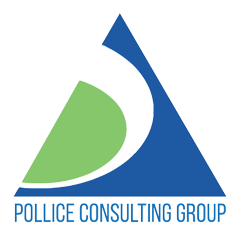Tasks have sped up in the Canadian workplace at an accelerated rate. The Covid 19 aftermath, the raging war on attracting and retaining the right talent, the quest for better business practices, technological advances and client expectations – just to name a few; are placing tremendous pressure on businesses often to the extent of disruption and performance. Amid this turbulent and unstructured landscape is the fact that several employees are already burnt out, frustrated, disengaged, overworked and struggling for some sort of work life balance. All these factors are forcing businesses to take a fresh approach at how their people experience work.
A 2021 Gallup pole research shows that 85 % of employees consider themselves to be disengaged at work. That is an alarming statistic when you think that only 15 % of the world’s one billion employees are engaged at work. Lower engagement leads to lower productivity, slower economic growth and a downward spiral of human capital.
Employee engagement is the extent to which employees feel passionate about their jobs, are committed to the organization, and put discretionary effort into their work. Employee engagement goes beyond activities, games, and events; employee engagement drives performance.
When employees are engaged, they are more likely to invest in the work they do which leads to a higher quality of work produced. By investing in employee engagement, your company will be able to increase productivity, work quality, and retain top talent.
“employee engagement cannot be a strategy because engagement comes from within the employee. Leaders cannot engage employees because engagement is an emotional connection or commitment that an employee has to the organization that then causes the employee to want to put forth the additional effort to ensure organizational success”.
Annette Franz.
CEO, CX Journey Inc.
For the sake of this publication, I have used the term strategy to signify the necessary steps that a leader can take in order to help an employee achieve a positive emotional connection to their work and the organization as a whole. Most leaders believe (and rightfully so) that a positive employee engagement leads to improved motivation, better job satisfaction, job enrichment, lower conversion costs and reduced non conformance costs. This belief was proven back in 1991 when the Ivey School of Business at Western University in London, Ontario introduced the Service – Profit Chain theory which traced business profitability and customer satisfaction / loyalty to engaged employees.
The theory went on to prove that engaged employees raise productivity, increase profits, enhance customer experiences, foster brand loyalty, facilitate corporate and personal growth and increase market share.
Here are my five top strategies that an organization can employ in order to improve workplace engagement.
Strategy One: Bottom Up Approach.
If you look at the 128 Egyptian pyramids that are located in Egypt you will see that they are still standing 4,019 years later because they were built with a strong foundation. The same can be said for employee engagement. Organizations who are desirous of improving employee engagement conduct questionnaires and employee surveys that allow employees to express their opinions, thoughts and concerns because this information creates the foundation for positive employee engagement.
Court Holdings in Beamsville, Martinrea in Tillsonburg, Hammond power Solutions in Guelph and Ferrero in Brantford, just to name a few organizations are successful in their engagement strategies because they consistently request and receive employee feedback. These organizations realize that the more you ask for employee feedback, the more the employees feel respected and part of the organization.
Strategy Two: Promote Two Way Communication.
Employees must always be in the sunshine of communication and never in the dark. Communication that is divulged in secrecy or on a need to know basis creates a toxic work environment and causes lower engagement rates among employees. Two way communication promotes transparency which in turn leads to employee trust. Employees understand how decisions are made, they understand how the workplace is affected and what their role in the daily operations are. In order to be effective, communication must be a reciprocal event whereby employees are encouraged to share opinions, thoughts and concerns either in an open forum or in private.

Strategy Three: Zero Tolerance For Poor Work & Recognize Good Work.
Louis Armstrong once that; “my band is only as good as the worst musician. No matter how great other members are the audience always hears the worst.” The same is true for organizations. No matter how great your employees perform, when you permit weak links to exist without consequence, everyone in the business unit is dragged down to the common denominator, including your star employees.
Sixty – five percent of Gallup pole contributors felt that they didn’t get enough or any recognition for a job well done. As a result, these employees learn to look out for themselves, deliver results that the others deliver and never work to their maximum potential. They also begin to look for work elsewhere and forty percent say they will leave their current job over the next twelve months. For this reason, it is wise to reward your top performers with perks and incentives that enrich the workplace environment.
Strategy Four: Employ Competent Leaders.
A well known recruiter Jorgen Sundberg says that the cost of hiring the wrong leader is the equivalent to 30 % of that persons first year salary. He is also quick to point out that this doesn’t include, poor morale issues, loss productivity, employee turnover or severance. In my opinion, an organizations secret weapon to employee engagement is leadership. Front line leaders are the middle people between front liners and executive members and in most cases rarely do front liners interact with executive personnel. Most if not all their interactions are with their immediate leaders (middle leaders) and whether front liners are feeling secure, angry, frustrated, ignored, appreciated and respected depends on the tact and diplomacy of the respective leader.
“employee’s especially the stars – join a company and then quit their manager; it may not be the managers fault so much as these managers are not prepared to coach their employees nor do they have the skill set to get employees to the next level. Management is a skill and an art; the skill is understanding the job; the art is engaging employees.”
Jim Clifton.
Chairperson, Gallup International
There is a reason why the Anheuser – Busch Brewing Company (ABBC) is efficiently efficient at the front line. With a 82 % engagement rating, they employ front leaders that understand employees, can engage employees at the highest level and understand employee needs. Being employed as a front leader at ABBC is not an easy task.
Front line leaders go through a rigorous interview process that ensure that the right person is fully qualified, competent and comfortable in assuming the front line leadership position. The ABBC position is that this will reduce employee turnover, increase engagement and reduce the price on non – conformances.

Strategy Five: Invest In Personal Growth.
Investing in personal growth is part of the nurturing process of human capital management. Every human asset that an organization acquires ought to be polished and fostered into a long – term strategic organizational growth asset. Whether it is sponsoring in house training, higher education, outside relevant training or technical skills building – all creates a sense of loyalty and engagement amongst participants. Every employee craves a company that supports and invests in their well – being. Professional career training adds value to personal and corporate lives while increasing engagement and a sense of self worth.
Summary.
There are a few key takeaways that one can conclude from this publication. If an organization wishes to successfully craft strategies for engaging employees they may wish to keep the following principles in mind. They are: drive from the top and own from the bottom, ensure that talent management systems are enriching, communication is key to success, have a high level of intolerance for poor performance and ensure leaders are capable of shaping and nurturing positive experiences.
About The Author.
Nicholas Pollice is President of The Pollice Management Consulting Group located in Niagara, Ontario, Canada. An international facilitator, presenter and consultant, he is known as an operations management leader and coach. Nicholas conducts programs in leadership, supervision, communication, negotiation, conflict resolution and strategic planning. He has been a consultant since 1989 and is the author of several professional publications. His presentations have been consistently ranked in the top 10% throughout North America. See Nicholas’ bio, his other publications and services on the PMCG. Website at www.pollicemanagement.com


